Commentary
Childhood Cancer: Where's the Money?
Helen Jonsen 09.12.08, 12:01 AM ET
| ||||
First it began as little night pains in the leg, the kind most parents associate with growing pains. We told our little girl, "Don't worry, it will go away," and the next morning it seemed fine. She ran and played and enjoyed the days of summer, like her friends did.
But our nine-year-old's nights became more painful. A swelling in her knee got worse. A slip in the wet grass became an excruciating accident. There was little sign of anything more serious, but the pain grew in intensity and frequency. A couple of weeks went by, and a new school year was about to begin.
Finally, one tearful night, when Dad was massaging her leg to help it feel better, he felt a lump in addition to the swelling. He took her to the pediatrician, hoping against hope. The doctor later admitted his "blood ran cold" when he felt her leg.
Within hours, she was diagnosed with osteosarcoma, a bone cancer that often first appears near the knee or elbow joint, and can spread to the lungs and become fatal. A biopsy confirms the diagnosis. Osteosarcoma is found in only 400 children each year in America.
In this case, less than a month after the onset of symptoms, the tumor had grown to the size of a wine bottle, forcing an oncology surgeon to remove 80% of her femur and her knee joint and rebuild her leg internally with a space-age prosthetic.
She underwent debilitating chemotherapy for ten months, her entire fifth-grade school year, and continues physical therapy and rehabilitation so that her bionic leg, with half its healthy muscle intact, can learn to walk again. We now believe our daughter is one of the survivors.
No matter how good the treatment, not every child survives. One child in five whose parents hear the terrifying words "your child has cancer" will die. Sometimes the advancing cancer cannot be stopped with all the weapons in the oncologists' current arsenal. Sometimes it is the "cure" protocol that kills them. And every time, a parent wonders why, and cries.
Our daughter's battle with pediatric cancer is one of 12,500 in America each year, the most common kinds being leukemias and lymphomas. In July, Congress acknowledged that research into children's cancers is underfunded. Why would that be the case?
For one thing, children with life-threatening diseases exhaust their families emotionally and often financially; even after recovery, neither the children nor their parents find it easy to advocate for themselves. The children are too young, and for the whole family there is always that fear of recurrence. Parents want some respite before the horror might begin again. Unlike other health care lobbies, they do not have the energy to march in the streets and call for action.
According to Kate Shafer, Director of Advocacy for CureSearch National Childhood Cancer Foundation, most federal funding for childhood cancer research comes from the National Cancer Institute (NCI), with a small amount coming through appropriations. Schafer says, "It's a bit difficult to determine how much in any given year is spent on childhood cancer research. It is around $170 million per year."
Most of that goes toward laboratory research. The funding for pediatric cancer clinical trials has gone down every year since 2003, and is currently $26.4 million. By comparison, NCI funding for AIDS research was $254 million in 2006; funding for breast cancer topped $584 million the same year.
It often takes one person's passion, born of pain, to raise awareness and start a movement. The sad truth is that it has taken a Congresswoman's loss to move her colleagues, but federal funding for research into the treatment and cures for pediatric cancer is being penned into law.
In June, the House of Representatives passed H.R. 1553, which authorizes $30 million annually over five years to fund clinical trial research, create the first population-based national childhood cancer database and further improve public awareness and communication regarding available treatments and research. That's a tall order for $30 million. It costs more than that to make one relatively small Hollywood movie.
The bill, sponsored by Rep. Deborah Pryce, R-Ohio, is called the Caroline Pryce Walker Conquer Childhood Cancer Act in memory of the lawmaker's nine-year-old daughter, who lost her life to neuroblastoma in 1999. The Senate followed suit, and President Bush signed the funding act July 29.
But as Shafer, the childhood-cancer cure advocate, notes, "the money still has to be appropriated. The next step in the process is to get Congress to include some, or--less likely--all of this money authorized in the appropriations bills that have to pass every year."
Cancer is the No. 1 disease killer of children in the U.S. and the second overall killer of children, behind car accidents. We tend to talk about it in hushed tones instead of screaming for help. But scream we should.
Research groups need collective philanthropy to fund research sufficient to eventually lead to a breakthrough--one in the form of newer, less invasive treatments, cures and maybe even early-detection screening and prevention in our lifetime.
On Sept. 5, the three major television networks, ABC, NBC and CBS, simultaneously broadcast a one-hour telethon, "Stand Up 2 Cancer," which, combined with related efforts, raised $100 million. (The organizers at the Entertainment Industry Foundation have not said what portion of that will go directly to research into pediatric cancers.) During the telecast, they aired the famous radio broadcast that launched the March of Dimes to end polio, during which singer Eddie Cantor asked all Americans to send in a dime.
Today, polio has been eradicated in the U.S. and in more than 200 countries, according to the World Health Organization. That should be a lesson as to how far a little philanthropy can go. May it be an inspiration in the fight against childhood cancer. Wish big.
Helen Jonsen is a Forbes.com senior editor whose daughter recently underwent treatment for osteosarcoma at Morgan Stanley Children's Hospital of New York Presbyterian, Columbia University Medical College.

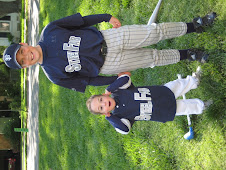









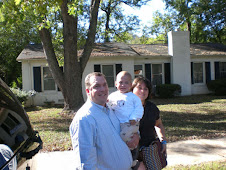
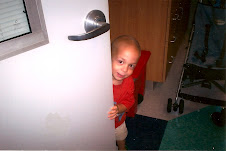




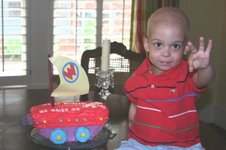

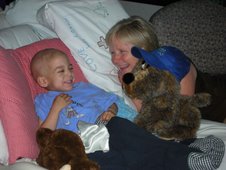

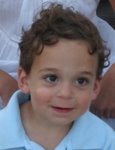




No comments:
Post a Comment